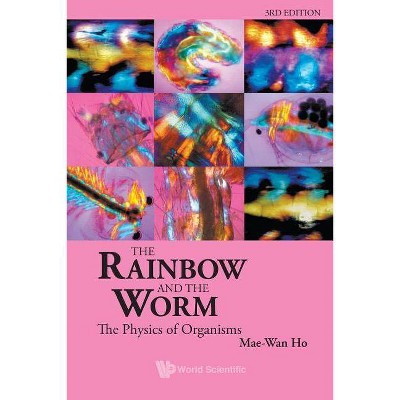Twilight of the Mammoths, 8 - (Organisms and Environments) by Paul S Martin (Paperback)

Similar Products
Products of same category from the store
AllProduct info
<p/><br></br><p><b> About the Book </b></p></br></br>"Paul S. Martin's innovative ideas on late quaternary extinctions and wildlife restoration have fueled one of science's most stimulating recent debates. He expounds them vividly here, and defends them eloquently. A must-read."--David Rains Wallace, author of "Beasts of Eden " <BR>"This is a marvelous read, by a giant in American prehistory, about one of the greatest mysteries in the earth sciences."--Tim Flannery, author of "The Eternal Frontier " <BR>"Whether or not you agree with Paul Martin, he has shaped how we think about our Pleistocene ancestors and their role in transforming this planet."--Ross D. E. MacPhee, Curator of Mammalogy, American Museum of Natural History<p/><br></br><p><b> Book Synopsis </b></p></br></br>As recently as 11,000 years ago-"near time" to geologists-mammoths, mastodons, gomphotheres, ground sloths, giant armadillos, native camels and horses, the dire wolf, and many other large mammals roamed North America. In what has become one of science's greatest riddles, these large animals vanished in North and South America around the time humans arrived at the end of the last great ice age. Part paleontological adventure and part memoir, <i>Twilight of the Mammoths </i>presents in detail internationally renowned paleoecologist Paul Martin's widely discussed and debated "overkill" hypothesis to explain these mysterious megafauna extinctions. Taking us from Rampart Cave in the Grand Canyon, where he finds himself "chest deep in sloth dung," to other important fossil sites in Arizona and Chile, Martin's engaging book, written for a wide audience, uncovers our rich evolutionary legacy and shows why he has come to believe that the earliest Americans literally hunted these animals to death. <br /><br />As he discusses the discoveries that brought him to this hypothesis, Martin relates many colorful stories and gives a rich overview of the field of paleontology as well as his own fascinating career. He explores the ramifications of the overkill hypothesis for similar extinctions worldwide and examines other explanations for the extinctions, including climate change. Martin's visionary thinking about our missing megafauna offers inspiration and a challenge for today's conservation efforts as he speculates on what we might do to remedy this situation-both in our thinking about what is "natural" and in the natural world itself.<p/><br></br><p><b> From the Back Cover </b></p></br></br>Paul S. Martin's innovative ideas on late quaternary extinctions and wildlife restoration have fueled one of science's most stimulating recent debates. He expounds them vividly here, and defends them eloquently. A must-read.--David Rains Wallace, author of <i>Beasts of Eden </i><br /><br />This is a marvelous read, by a giant in American prehistory, about one of the greatest mysteries in the earth sciences.--Tim Flannery, author of <i>The Eternal Frontier </i><br /><br />Whether or not you agree with Paul Martin, he has shaped how we think about our Pleistocene ancestors and their role in transforming this planet.--Ross D. E. MacPhee, Curator of Mammalogy, American Museum of Natural History<p/><br></br><p><b> About the Author </b></p></br></br><b>Paul S. Martin</b> is Emeritus Professor of Geosciences, Desert Laboratory, University of Arizona.
Price History
Cheapest price in the interval: 29.99 on October 27, 2021
Most expensive price in the interval: 29.99 on November 8, 2021
Price Archive shows prices from various stores, lets you see history and find the cheapest. There is no actual sale on the website. For all support, inquiry and suggestion messagescommunication@pricearchive.us




















